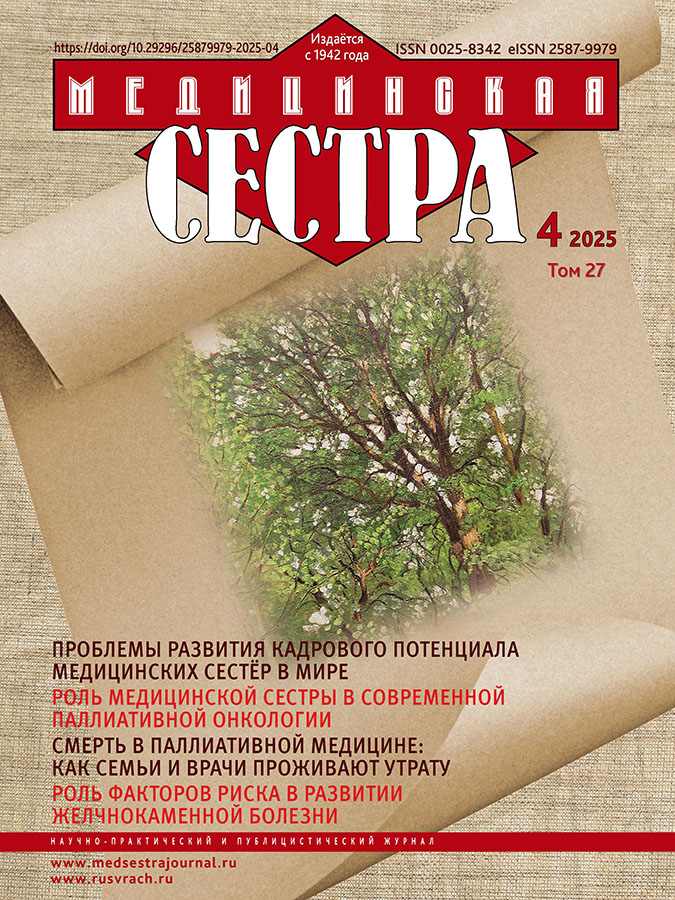Defeat of the blood system after COVID-19 in general medicine practice
- 作者: Shevtsov D.O.1, Skvortsov V.V.1
-
隶属关系:
- Federal State Budgetary Educational Institution of Higher Education "Volgograd state medical university" of the ministry of health of the Russian Federation
- 期: 卷 27, 编号 4 (2025)
- 页面: 45-47
- 栏目: Profession: theory and practice
- URL: https://journals.eco-vector.com/0025-8342/article/view/685336
- DOI: https://doi.org/10.29296/25879979-2025-04-11
- ID: 685336
如何引用文章
详细
Coronavirus infection is an acute viral disease transmitted by airborne droplets. It was one of the first to be described in 1975 in a patient suffering from acute rhinitis. The causative agents of the disease are a family of RNA-containing coronaviruses. Within the family, there are several groups of infectious agents that are dangerous to the human body: human coronavirus 229 E, human OS-43 virus and human intestinal coronaviruses. The pathogen is quite unstable in the environment, and its effects can be eliminated with the help of disinfectants and exposure to high temperatures. Basically, HIV-infected patients, children, patients with severe chronic diseases (diabetes mellitus, oncological processes) are considered to be at risk for the incidence of atypical coronavirus pneumonia. After entering the upper respiratory tract, the coronavirus actively multiplies and epithelial cells are destroyed. If the immune system is poorly developed, then the coronavirus can penetrate into the alveoli, the process of replication of the pathogen occurs in their cytoplasm. By exocytosis, ready-made virions lie on the outer membrane of cells, which activates the fusion of epithelial cells and accelerated syncytium formation.
全文:
作者简介
Danil Shevtsov
Federal State Budgetary Educational Institution of Higher Education "Volgograd state medical university" of the ministry of health of the Russian Federation
编辑信件的主要联系方式.
Email: vskvortsov1@ya.ru
ORCID iD: 0009-0009-7310-6811
student
俄罗斯联邦, VolgogradVsevolod Skvortsov
Federal State Budgetary Educational Institution of Higher Education "Volgograd state medical university" of the ministry of health of the Russian Federation
Email: vskvortsov1@ya.ru
ORCID iD: 0000-0002-2164-3537
SPIN 代码: 7201-2980
Doctor of Medicine, Professor of the Department of Internal Medicine
俄罗斯联邦, Volgograd参考
- Yong S.J. Long COVID or post-COVID-19 syndrome: putative pathophysiology, risk factors, and treatments. Infect Dis (Lond). 2021; 53 (10): 737–754.
- Taquet M., Dercon Q., Luciano S. et al. Incidence, co-occurrence, and evolution of long-COVID features: A 6-month retrospective cohort study of 273,618 survivors of COVID-19. PLoS Med. 2021; 18 (9): 220–232.
- Gupta M., Gupta N., Esang M. Long COVID in Children and Adolescents. Prim Care Companion CNS Disord. 2022; 24 (2): 21.
- Behnood S.A., Shafran R., Bennett S.D. et al. Persistent symptoms following SARS-CoV-2 infection amongst children and young people: A meta-analysis of controlled and uncontrolled studies. J Infect. 2022; 84 (2): 158–170.
- Blomberg B., Mohn K.G., Brokstad K.A. et al. Long COVID in a prospective cohort of home-isolated patients. Nat Med. 2021; 27 (9): 1607–1613.
- Raman B., Bluemke D.A., Lüscher T.F. et al. Long COVID: post-acute sequelae of COVID-19 with a cardiovascular focus. Eur Heart J. 2022; 43 (11): 1157–1172.
- Munblit D., Bobkova P., Spiridonova E. et al. Incidence and risk factors for persistent symptoms in adults previously hospitalized for COVID-19. Clin Exp Allergy. 2021; 51 (9): 1107–1120.
- Pelà G., Goldoni M., Solinas E. et al. Sex-Related Differences in Long-COVID-19 Syndrome. J Womens Health (Larchmt). 2022; 31 (5): 620–630.
- Stewart S., Newson L., Briggs T.A. et al. COVID risk – a signal to address sex hormones and women's health. Lancet Reg Health Eur. 2021; 11 (3): 1–3.
- Sudre C.H., Murray B., Varsavsky T. et al. Attributes and predictors of long COVID. Nat Med. 2021; 27 (4): 626–631.
- Hoiland R.L., Fergusson N.A., Mitra A.R. et al. The association of ABO blood group with indices of disease severity and multiorgan dysfunction in COVID-19. Blood Adv. 2020; 4 (20): 4981–4989.
- Zou L., Ruan F., Huang M. et al. SARSCoV-2 viral load in upper respiratory specimens of infected patients. N Engl J Med. 2020; 382 (12): 1177–1179.
- Fajnzylber J., Regan J., Coxen K. et al. Massachusetts Consortium for Pathogen Readiness. SARS-CoV-2 viral load is associated with increased disease severity and mortality. Nat Commun. 2020; 11 (1): 5493.
- Dadras O., Afsahi A.M., Pashaei Z. et al. The relationship between COVID-19 viral load and disease severity: A systematic review. Immun Inflamm. 2022; 10 (3): 580.
补充文件





